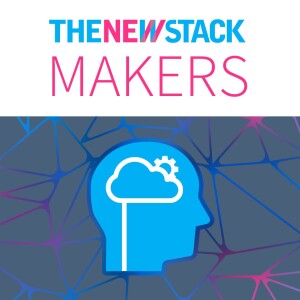
Case Study: How SeatGeek Adopted HashiCorp’s Nomad
 2022-11-16
2022-11-16
LOS ANGELES — Kubernetes, the open source container orchestrator, may have a big footprint in the cloud native world, but some organizations are doing just fine without it. Take, for example, SeatGeek, which runs a mobile application that serves as a primary and secondary market for event tickets.
For cloud infrastructure, the 12-year-old company’s workloads — which include non-containerized applications — have largely run on Amazon Web Services. A few years ago, it turned to HashiCorp’s Nomad, a scheduler built for running for apps whether they’re containerized or not.
“In the beginning, we had a platform that an engineer would deploy something to but it was very constrained. We could only give them certain number of options that they could use, as very static experience,” said Jose Diaz-Gonzalez, a staff engineer at SeatGeek, in this episode of The New Stack Makers podcast.
“If they want to scale, an application required manual toil on the platform team side, and then they can do some work. And so for us, we wanted to expose more of the platform to engineers and allow them to have more control over what it is that they were shipping, how that runtime environment was executed, and how they scale their applications.”
This On the Road episode of Makers, recorded here during HashiConf, HashiCorp’s annual user conference, featured a case study of SeatGeek’s adoption of Nomad and the HashiCorp Cloud Platform. The conversation was hosted by Heather Joslyn, features editor of TNS.
This episode was sponsored by HashiCorp.
Nomad vs. Kubernetes: Trade-Offs
SeatGeek essentially runs the back office for ticket sales for its partners, including Broadway productions and NFL teams like Dallas Cowboys, providing them with “something like a software as a service,” said Diaz-Gonzalez.
“All of those installations, they're single tenant, but they run roughly the same way for every single customer. And then on the consumer side we run a ton of different services and microservices and that sort of thing.”
Though the workloads run in different languages or on different frameworks, he said, they are essentially homogeneous in their deployment patterns; SeatGeek deploys to Windows and Linux containers on the enterprise side, and to Linux on the consumer, and deploys to both the U.S. and European Union regions.
It began using Nomad to give developers more control over their applications; previously, the deployment experience had been very constrained, Diaz-Gonzalez said, resulting in what he called “a very static experience.
“To scale an application required manual toil on the platform team side, and then they can do some work,” he said. “And so for us, we wanted to expose more of the platform to engineers and allow them to have more control over what it is that they were shipping, how that how that runtime environment was executed and how they scale their applications.”
Now, he said, SeatGeek uses Nomad ‘to provide basically the entire orchestration layer for our deployments
Foregoing Kubernetes (K8s) does have its drawbacks. The cloud native ecosystem is largely built around products meant to run with K8s, rather than Nomad.
The ecosystem built around HashiCorp’s product is “a much smaller community. If we need support, we lean heavily on HashiCorp Enterprise. And we're willing, on the support team, to answer questions. But if we need support on making some particular change, or using some certain feature, we might be one of the few people starting to use that feature.”
“That said, it's much easier for us to manage and support Nomad and its integration with the rest of our platform, because it's so simple to run.”
To learn more about SeatGeek’s cloud journey and the challenges it faced — such as dealing with security and policy — check out the full episode.
More Episodes
 2024-01-17
2024-01-17
 2023-12-21
2023-12-21
 2023-12-13
2023-12-13
 2023-12-12
2023-12-12
 2023-11-22
2023-11-22
 2023-11-21
2023-11-21
 2023-11-16
2023-11-16
 2023-11-14
2023-11-14
 2023-11-08
2023-11-08
Create your
podcast in
minutes
- Full-featured podcast site
- Unlimited storage and bandwidth
- Comprehensive podcast stats
- Distribute to Apple Podcasts, Spotify, and more
- Make money with your podcast
It is Free
- Privacy Policy
- Cookie Policy
- Terms of Use
- Consent Preferences
- Copyright © 2015-2024 Podbean.com





